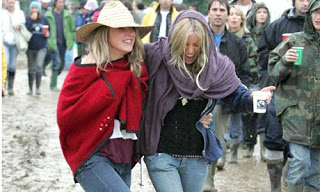Another Jeremy Reed unpublished manuscript in his trademark purple ink. From 2007 when Doherty was much discussed in the media. 'Mais où sont les neiges d'antan?'
The New Bohemianism
5:30 at Red Snapper Books, 22 Cecil Court, under moodily atmospheric London skies, and the red desk at which I write poetry is the lapidary colour of a dull ruby. When Peter Doherty surges in fedora or top hat angled on his intense fringe, a gun-grey Dior suit, white shirt and square cut Hardy Amies black tie, and a cheap Brick Lane pirate scarf then the reinvented bohemian look comes alive naturally, not as an image, but as the unmodified real thing. We face each other, poet and musician, as two anti-establishment artists, whose lifestyles and social viewpoints go radically wide of convention. When Aaron, the shop's owner comes up the stairs from his basement office, in a wide-brimmed black felt hat, a serpent brooch pinned to his striped blazer, with the offer to Pete, to jam in the basement over a bottle of Jack Daniels, we are three, joined by an inherent bohemian instinct. Pete gives me a Big Purple, turtle-shaped Quality street chocolate, explosive with praline, before taking the steps down to the shop's insulated basement. I carry on writing while the two go through an impromptu version of the Kinks' plaintive 'Tired of Waiting For You.'
Bohemianism, a term first used in the 19th century, and a specifically French one, to describe the unconventional lifestyles of marginalized and impoverished artists, writers, musicians and actors, has as an urban phenomenon never really gone away, the irrepressible bohemian exists always as an affirmative reminder of expression marker in society that genius creativity expresses itself through lf all systems. finds individual expression independent of all systems. If Rimbaud and Verlaine, who travelled destitute across Europe, writing poetry on the road, are seen as prototypical bohemians, in advance of Jack Kerouac and the Beats, then Doherty inherits bohemianism as the continuity of a lifestyle in which the artist also expresses himself through fashion, as part of an edgy resistance to convention. Doherty, as opposed to the sort of faux-bohemianism inspired by Sienna Williams fashion statement at Glastonbury Festival in 2004, is as much an update of bohemianism today, as the Mods were in the 1960s, those pill-headed, masterpieces of inventive fashion gunning thier way across London's West End on gizmo-stacked, mirror-tiered scooters, as resistant pioneers of modernism. Doherty's writing on songs like 'Albion' with its 'gin and teacups' imagery, and alienated inner city youth integrated into the idea of Albion, as the bohemian site of Britain, makes a social statement as important to his times as Ray Davies 'Waterloo Sunset,' or 'Dedicated Follow of Fashion,' were to the Vespa and Lambretta-hopping Mods segueing exhibitionistically into Carnaby Street.
 |
| Sienna Miller Glastonbury 2004 |
There's a sense in which celebrity is nearly always the enemy of creativity, and that the real thing if it is durable, always impacts from a spiky edge, marginalized, resistant to mainstream absorption... Keith Richards who started out as a spotty Deptford punk, playing in pubs, remains a bohemian, not so different in his attitude to Doherty, in that both remain resolutely opposed to all conceived notions of convention, whereas the like of Amy Winehouse and Kate Moss, qualify more as celebrities, in the absence of any real creative work to endorse what is outwardly a bohemian lifestyle. There's a qualifier her, in that bohemianism, or new bohemianism is authentic only if the work and life are in some way integrated into a unified expression. If Doherty was simply a repeat offender as a user, or an ace dresser, then his bohemianism would be surface, but the foundations of his attitude rest securely on a talent that makes him lyrically the most inspired songwriter of his generation. Pete is the voice of new bohemianism, in that his lyrics are unapologetically lived-in, give voice to and nearly always succeed in making personal issues public, in the way that all good writing proceeds effortlessly from the individual to the universal, as its arena of expression. Down In Albion, is as an album, the indispensable soundtrack to new bohemianism, and Pete the spiky chronichler of its druggy infransigent values.
Another day, he comes into the shop, this time in a dandified charcoal crombie, purchased from Brick Lane, and gives me an umbrella sheathed into a cane, as one of his serendipitous impulsive market purchases. We talk about poetry, and I recommend he reads Jean Genet's The Thief's Journal, another recidivist bohemian, as a book time-tuned to his interests from the mid-century. He takes it, together with Alexander Trocchi's heroin novel Cain's Book, and I think how the two dead authors would most likely have approved of what we are both doing in our respective arts and bohemian lives. Before he flies out of the shop, literally on the run, I recommend he visits Sherry's in Ganton Street, just off Carnaby Street, the best shirt ship in London for those who want polka dots, paisley and sarturial attitude, and a place where you'll be served by new bohemians.


